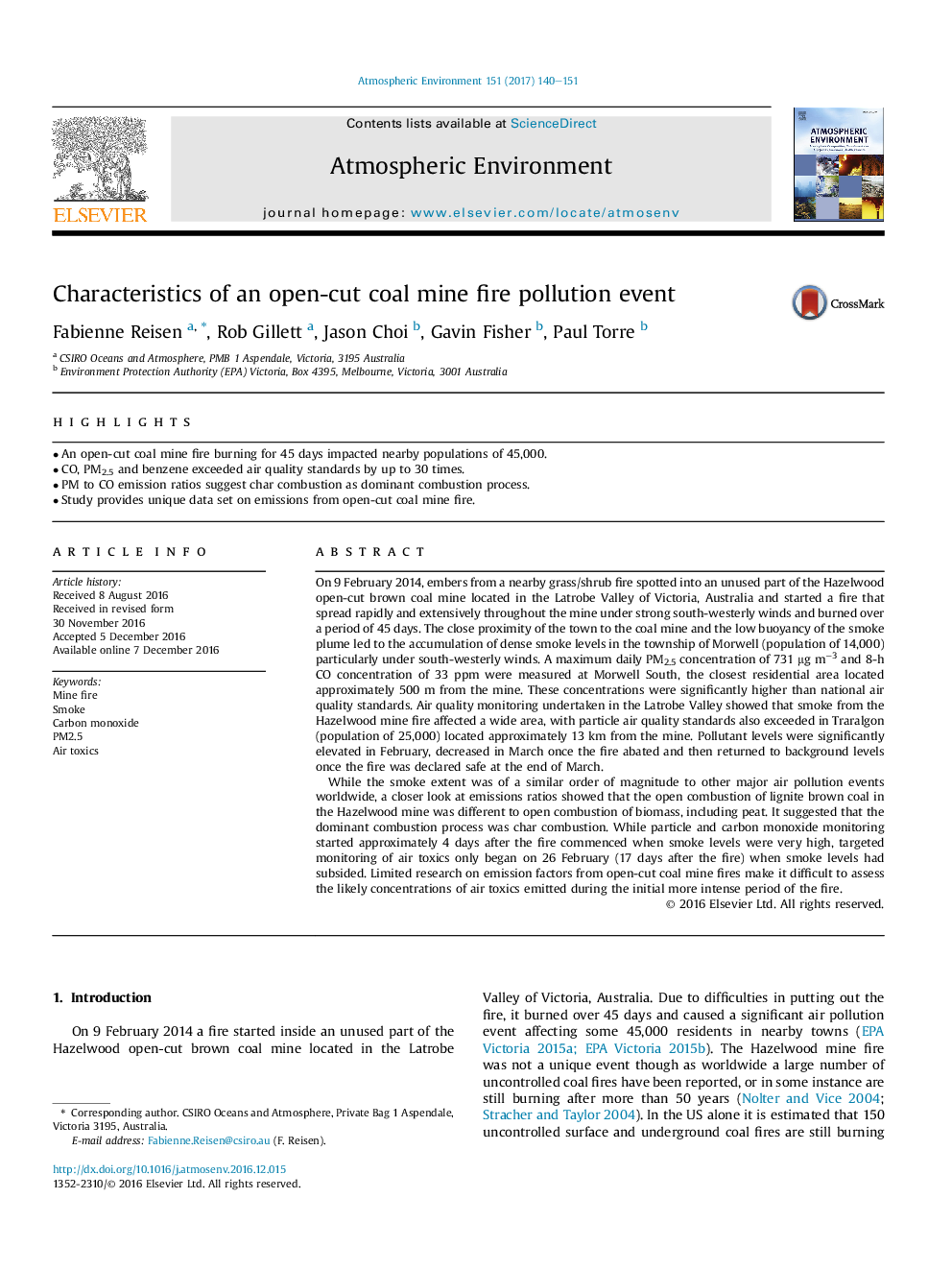| Article ID | Journal | Published Year | Pages | File Type |
|---|---|---|---|---|
| 5753216 | Atmospheric Environment | 2017 | 12 Pages |
Abstract
While the smoke extent was of a similar order of magnitude to other major air pollution events worldwide, a closer look at emissions ratios showed that the open combustion of lignite brown coal in the Hazelwood mine was different to open combustion of biomass, including peat. It suggested that the dominant combustion process was char combustion. While particle and carbon monoxide monitoring started approximately 4 days after the fire commenced when smoke levels were very high, targeted monitoring of air toxics only began on 26 February (17 days after the fire) when smoke levels had subsided. Limited research on emission factors from open-cut coal mine fires make it difficult to assess the likely concentrations of air toxics emitted during the initial more intense period of the fire.
Related Topics
Physical Sciences and Engineering
Earth and Planetary Sciences
Atmospheric Science
Authors
Fabienne Reisen, Rob Gillett, Jason Choi, Gavin Fisher, Paul Torre,
